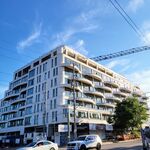Earlscourt_Lad
Active Member
Give it another 5 years, and we'll see borrowing creep up again.
Out of curiousity, what's so different about the type of work? It strikes me that manufacturing and construction have always relied on a pool of the newly arrived.
One reason for the increasing lack of a middle class in the city proper is that a primary middle class aspiration is to own a big house with a backyard, 2 car garage etc, and those things simply aren't readily available in the city, so it's only reasonable that there are more middle class people in the burbs and less in the central city.
One reason for the increasing lack of a middle class in the city proper is that a primary middle class aspiration is to own a big house with a backyard, 2 car garage etc, and those things simply aren't readily available in the city, so it's only reasonable that there are more middle class people in the burbs and less in the central city.
So the assumption that 416 is one world, and 905 is another, is just plain wrong. A study which cuts off at the 416 boundaries is one that just does not get commercial, communal, leisure, recreational, or ethnic flows in this city. The realization that people (especially ones who are not single) want houses and will look to the best-situated and most amenable neighbourhoods for them even -- gasp -- without taking into account the location of notional political boundaries to do it, is the good point that underlines what the U of T study does not get.
In other words, there is something of a gap between supply and demand, and that gap is well-planned walkability and mixed use. It seems like the tide is slowly turning with some of the projects out there, but as is unsurprising with this sector, it's an awfully slow tide, and city councils run by developers incented to look to cheapest and most immediate return rather than highest and best use are not exactly helping.




